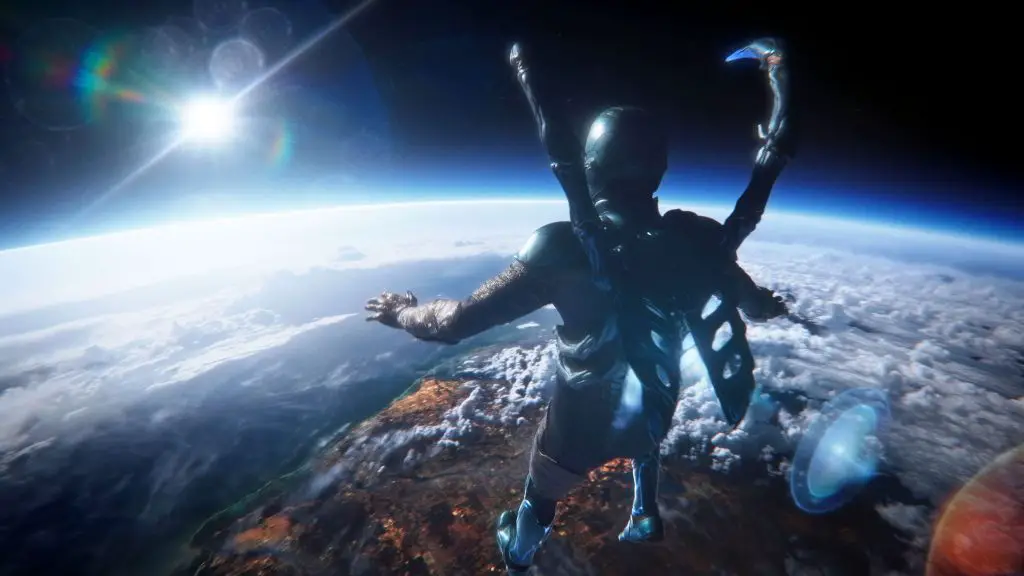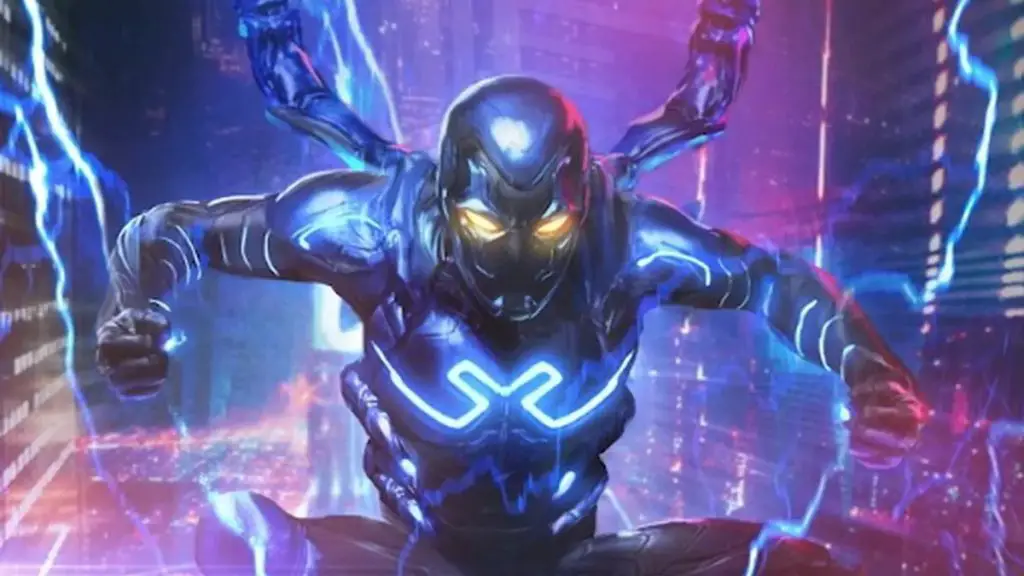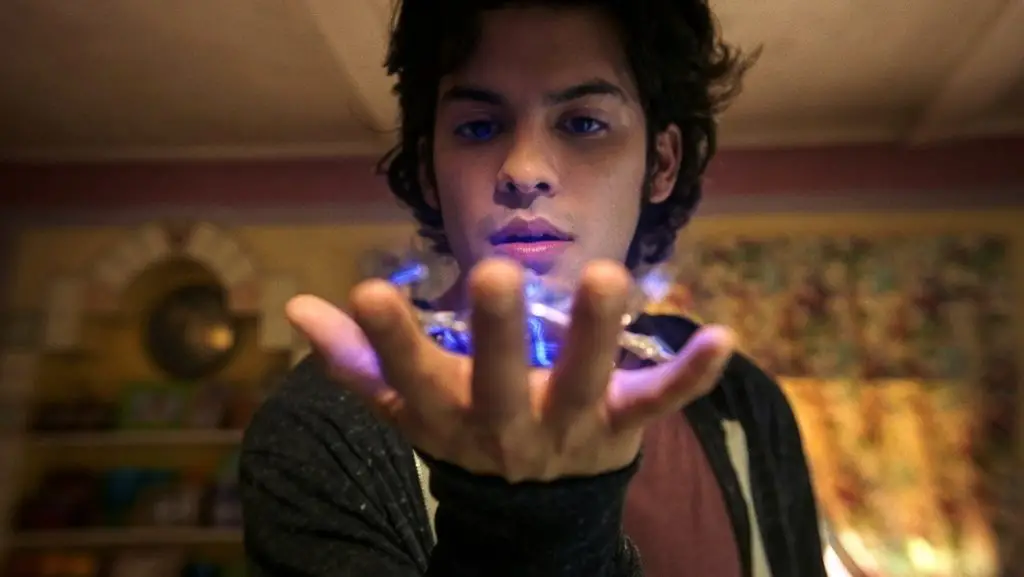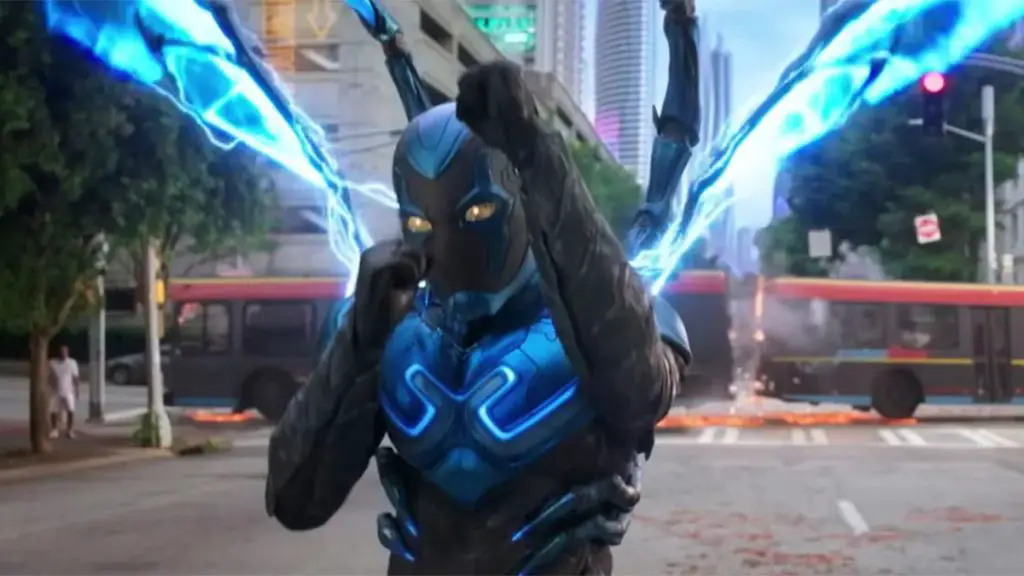In recent times, the cinematic journey of the DC Universe (DCU) has been tumultuous, to say the least. As box office results remain unpredictable with movies like Shazam! Fury of the Gods and The Flash not performing as expected, all eyes turn to what the future holds for this dynamic universe, especially with James Gunn and Peter Safran plotting a reboot. Yet, amidst these shifting sands stands a promising figure – the Blue Beetle, brought to life by Cobra Kai’s Xolo Maridueña. This marks a significant milestone as the very first DC Latino superhero gracing the big screen. Given the upheaval, it would be a disservice to let Maridueña’s portrayal of Jaime Reyes be overshadowed. The anticipation intensifies with the film’s end-credit scenes, offering glimmers of hope and continuation for the young hero. An added treat for the fans is a heartwarming nod to Jaime’s rich Mexican heritage.
Diving Deeper: The Legacy of the Blue Beetle

The narrative arc of Blue Beetle predominantly revolves around Jaime Reyes’s transformation into Palmera City’s defender. The backstory of the Scarab – an ancient alien weapon with world-ending powers – and its former bearers is subtly interwoven into the tale. This sentient device chooses its host, and its legacy in the DCU is monumental.
Historically, the Scarab found its way to Dan Garrett, becoming the pioneering Blue Beetle. Garrett’s knowledge and experiences with the Scarab played a crucial role in shaping Ted Kord, a prodigious mind behind Kord Industries. Despite the Scarab’s refusal to bond with Ted following Garrett’s demise, Kord’s unyielding spirit and technological prowess saw him don the Blue Beetle mantle, fortifying his role with state-of-the-art equipment and a covert base beneath his mansion.
A shadow of sorrow looms over Ted’s journey when tragedy strikes with the loss of his wife. The subsequent years see him withdrawing, eventually disappearing mysteriously. This absence thrusts the responsibility of Kord Industries onto his sister, Victoria, who shifts its focus back to arms development. Meanwhile, the secrets of the Kord estate lay dormant, waiting for Jaime’s fateful encounter with the Scarab.
Jenny, Ted’s daughter, with the help of Uncle Rudy, introduces Jaime to the world of alien technology. The revelations from Ted’s still-functional computer form the crux of the first post-credit scene, hinting at Ted’s survival and possible space-bound adventures. Given the Scarab’s origins and the technology’s tantalizing potential, it wouldn’t be a stretch to imagine Ted on a cosmic quest, possibly fueled by his wife’s memory and the Scarab’s mysterious capabilities. Though speculative, these breadcrumbs might very well pave the way for the new direction Gunn and Safran envision for the DCU.
Mexico’s Iconic Hero Takes a Bow

The second end-credits scene departs from the broader DCU narrative, paying homage to Mexico’s beloved superhero, El Chapulín Colorado. A creation of the illustrious Roberto Gómez Bolaños from the 1970s show Chespirito, El Chapulín Colorado has been a symbol of comedic heroism, always arriving in the nick of time, albeit with hilarious consequences. Long before the superhero craze gripped Hollywood, Bolaños had introduced audiences to this unique, laugh-out-loud superhero satire, which has left an indelible mark on Latin American pop culture.
Blue Beetle aptly celebrates this legacy, presenting an animated rendition of El Chapulín Colorado and his comical abilities. Through humor and nostalgia, it invites viewers to reminisce or discover Bolaños’ ingenious creation.
In Conclusion

Blue Beetle isn’t just a movie; it’s an amalgamation of legacy, culture, and the promise of new beginnings for the DCU. As it graces theaters, the film stands as a testament to the rich tapestry of stories waiting to be told and the heroes who rise, irrespective of the challenges that befall them.


